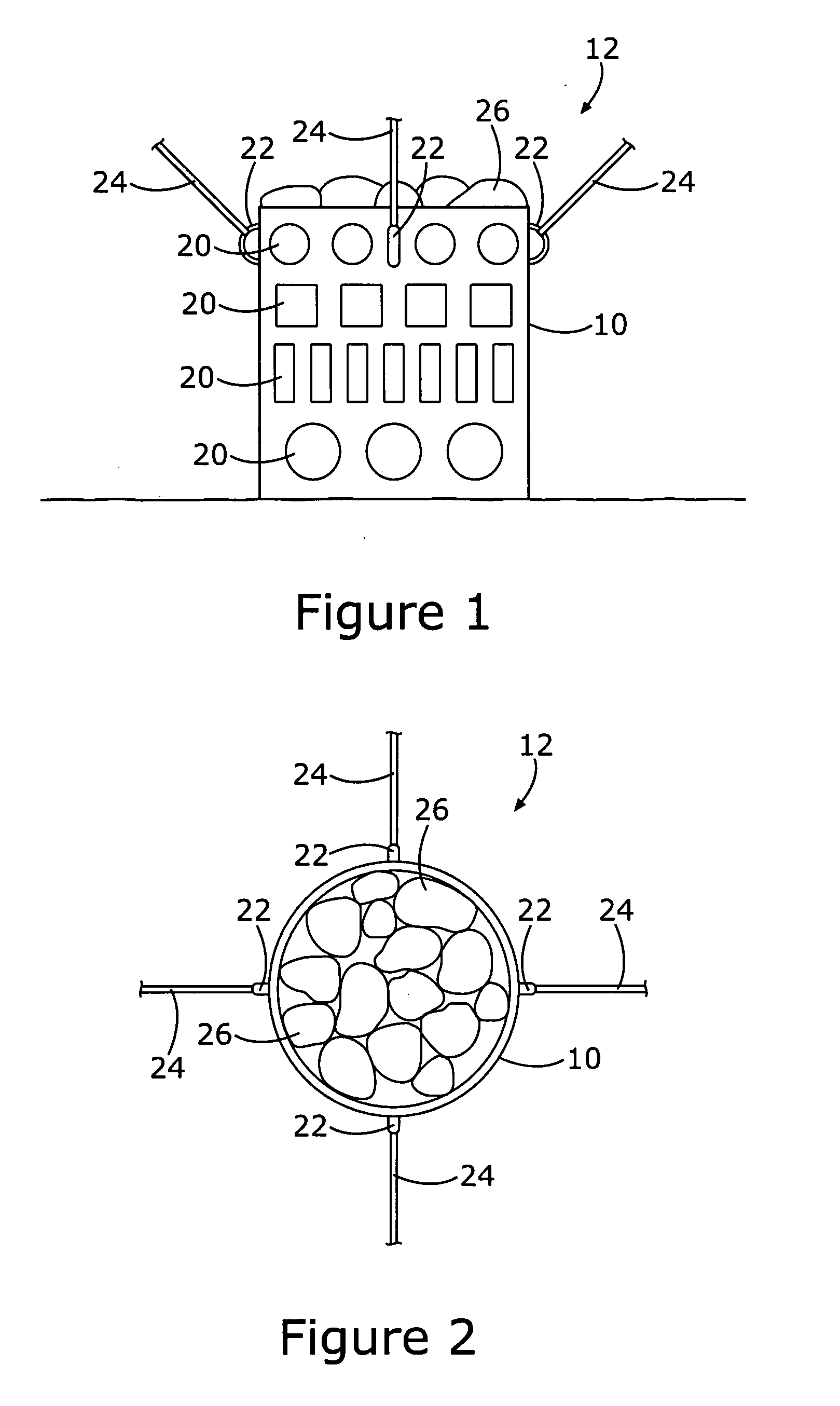Artificial reef anchor structure
a technology of artificial reefs and anchor structures, applied in the field of anchors, can solve the problems of predatory fish, limiting access to larger fish, and none of the above patents functions as an anchor for mooring floating vessels or structures, and none of the above patents can in any respect serve the function of an anchor for anything
- Summary
- Abstract
- Description
- Claims
- Application Information
AI Technical Summary
Benefits of technology
Problems solved by technology
Method used
Image
Examples
Embodiment Construction
[0033]The invention provides an underwater, ballast filled container with openings in the sides, top and bottom. The openings allow water currents, as well as marine organisms, to pass freely therethrough. Over time, marine organisms colonize the cavity areas of the ballast, thus utilizing the container as an artificial reef. One or more hitch points are provided on the container for attaching mooring lines, thereby allowing the container to serve as an anchor.
[0034]Referring now to FIGS. 1 through 5a, the artificial reef 12 consists of a container 10 with a plurality of openings 20 and a plurality of mooring rings 22, onto which are attached a plurality of mooring lines 24. Container 10 is filled with ballast 26.
[0035]As best seen in FIG. 2, container 10 is cylindrical, with a plurality of mooring lines 24 radiating outward at 90 degrees spacing from each other. While a circular, or cylindrical, container has certain advantages relating to strength and efficiencies of manufacture, ...
PUM
 Login to View More
Login to View More Abstract
Description
Claims
Application Information
 Login to View More
Login to View More - R&D
- Intellectual Property
- Life Sciences
- Materials
- Tech Scout
- Unparalleled Data Quality
- Higher Quality Content
- 60% Fewer Hallucinations
Browse by: Latest US Patents, China's latest patents, Technical Efficacy Thesaurus, Application Domain, Technology Topic, Popular Technical Reports.
© 2025 PatSnap. All rights reserved.Legal|Privacy policy|Modern Slavery Act Transparency Statement|Sitemap|About US| Contact US: help@patsnap.com



